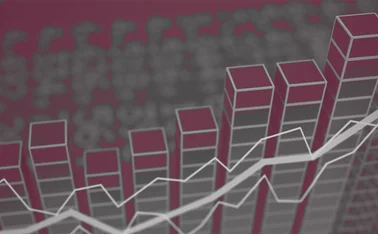
From bones to blockchain – The next currency disruptors


The future of currency as we know it today will be closely related to developments within the monetary system and laws around currency in circulation.
Currently, developments in the digital currency space are being closely watched, and concerns remain around security, efficiency and how the instrument could be issued. Of course, digital currencies have also been classified as private digital currencies, digital tokens, and so on.

There are four basic criteria that must be met for a currency to be deemed a currency:
- Most critically, whether its value is stable
- Whether it is safe to use, and can be preserved
- Whether it is a convenient payment instrument
- Speed of currency delivery. Currently, network and technical support ensure currency delivery can be made ‘in a flash’, which was unimaginable 10 or 20 years ago.
Since the development of the first currencies, people have strived to achieve these four goals with the help of various emerging technologies. The history of human currency development is the history of scientific and technological progress, through which the issuance and use of currency has constantly been improved and perfected. However advanced the currency, science and technology are always means to help currencies adapt to – or meet the needs of – public use.
Efforts to improve the security and efficiency of currency use has never stopped. From the earliest shells, stones, bones and metals to today’s banknotes; from the earliest cheques, money orders and promissory notes to today’s bank cards; even WeChat Pay and Alipay prevailing in China: they all reflect people’s unremitting efforts to improve the speed, security and convenience of currency use.
Thirty years ago, currency circulation was a critical task of central banks. Currency circulation was primarily about cash – or money type (M) 0 – circulation, the focus being whether cash circulation and commodity circulation activities were compatible. To this day there have been no major changes to this model, only a gradual shift from the adaptation between M0 and commodity circulation to the adaptation of narrow money (or M1) and broad money (or M2) with commodity circulation. Central banks are focusing on establishing a replacement for M0.
With the evolution of modern science – especially digital technology – academics have proposed new ideas: can digital technology play a more significant role or even trigger subversive change in the replacement of M1 or M2? While debates on this issue are certainly innovative, the application and implementation of a new monetary system requires more prudence, strict argumentation and practical verification. In this case, the stability of the currency should always be the top priority. If digital currency proves secure, speedy, easy to use and with a stable value, it can doubtless adapt to the needs of society with the prospect of broad development. Conversely, if digital currency brings instability or shocks to the value of the currency, the impact would be catastrophic.
New trends in fintech development
On a global scale, the value, development principles and consensus of the role of financial technology – known as fintech – have gradually solidified.
When fintech made its debut, countries worldwide were divided. Some welcomed fintech cautiously, while others took a dimmer view. However, over time, major countries, regions and international financial organisations have begun to adopt more positive and inclusive attitudes towards fintech. In June 2019, the International Monetary Fund (IMF) conducted a survey that investigated the fintech attitudes of 96 countries. The findings reveal two-thirds of these countries have realised the potential value of fintech and have begun, at a national level, to implement relevant fintech strategies to help all industries improve financing innovation and application capabilities. More than 60% of the surveyed countries have incorporated fintech into their national inclusive finance strategies.
With the advancement of science and technology, the division of labour in the financial industry has become increasingly market-oriented, specialised and refined. As a result, the operating industry and value chains have been continuously extended. Previously, a number of financial institutions’ processes were outsourced to technology companies; now they can co‑operate and integrate with each other more intensively in business areas such as data analytics, cyber security and IT infrastructure.
In prioritising and developing fintech, countries should also note that, although fintech can bring economic and social benefits, it also brings multiple risks. These risks can overlap, posing new challenges to financial regulation and social stability in various countries. At this point, countries should be increasingly aware of the need to develop regulatory technology so as to better develop fintech.
Today, fintech has emerged as a global issue. Countries sorely need to exchange industrial connectivity, technology research and development, talent training, infrastructure construction and governance experience in the fintech industry. It is hoped that, through the International Finance Forum, the needs of all parties for international exchanges and the collaborative governance of fintech will be better connected so fintech can enjoy orderly and effective development.
Only users who have a paid subscription or are part of a corporate subscription are able to print or copy content.
To access these options, along with all other subscription benefits, please contact info@centralbanking.com or view our subscription options here: http://subscriptions.centralbanking.com/subscribe
You are currently unable to print this content. Please contact info@centralbanking.com to find out more.
You are currently unable to copy this content. Please contact info@centralbanking.com to find out more.
Copyright Infopro Digital Limited. All rights reserved.
As outlined in our terms and conditions, https://www.infopro-digital.com/terms-and-conditions/subscriptions/ (point 2.4), printing is limited to a single copy.
If you would like to purchase additional rights please email info@centralbanking.com
Copyright Infopro Digital Limited. All rights reserved.
You may share this content using our article tools. As outlined in our terms and conditions, https://www.infopro-digital.com/terms-and-conditions/subscriptions/ (clause 2.4), an Authorised User may only make one copy of the materials for their own personal use. You must also comply with the restrictions in clause 2.5.
If you would like to purchase additional rights please email info@centralbanking.com







